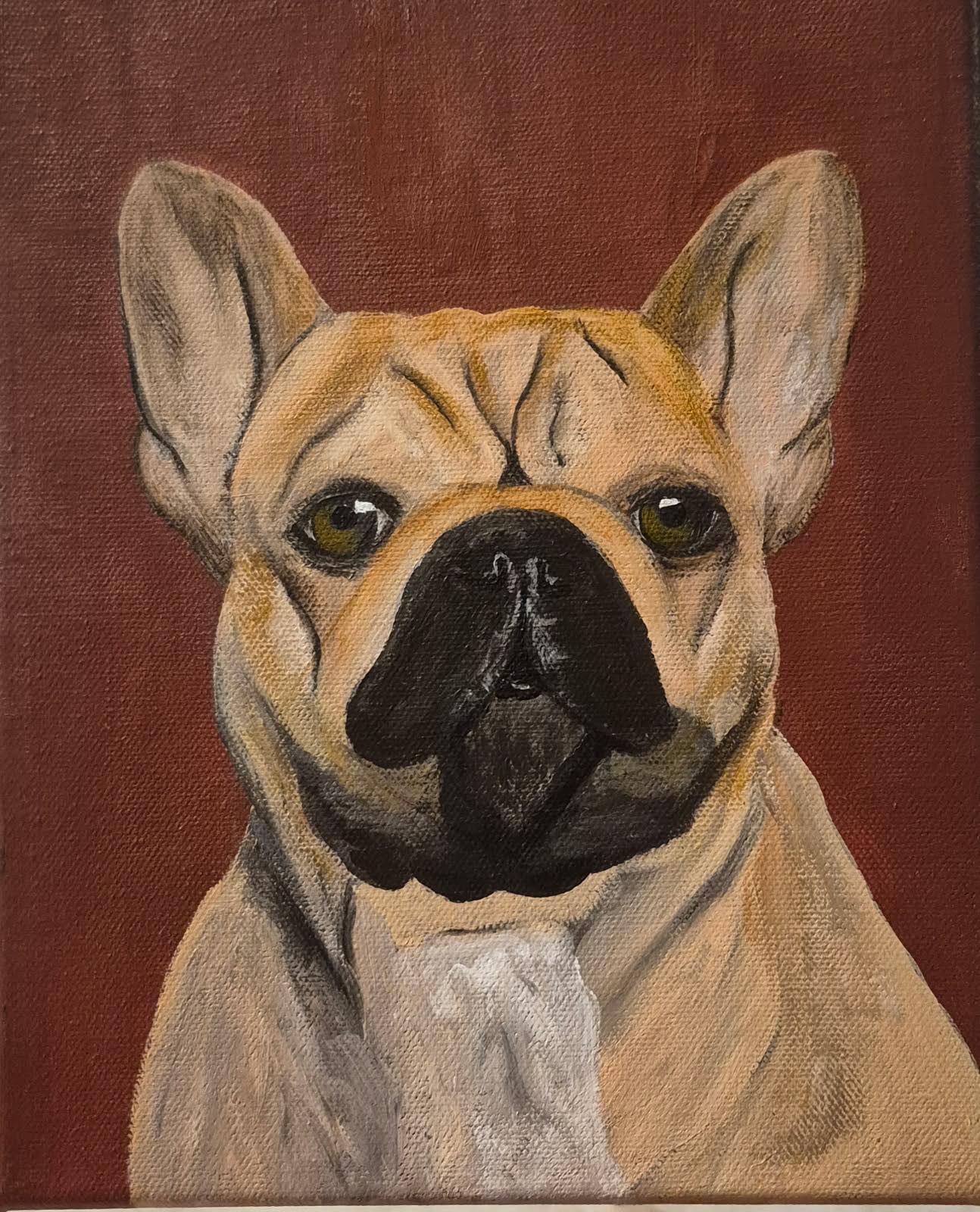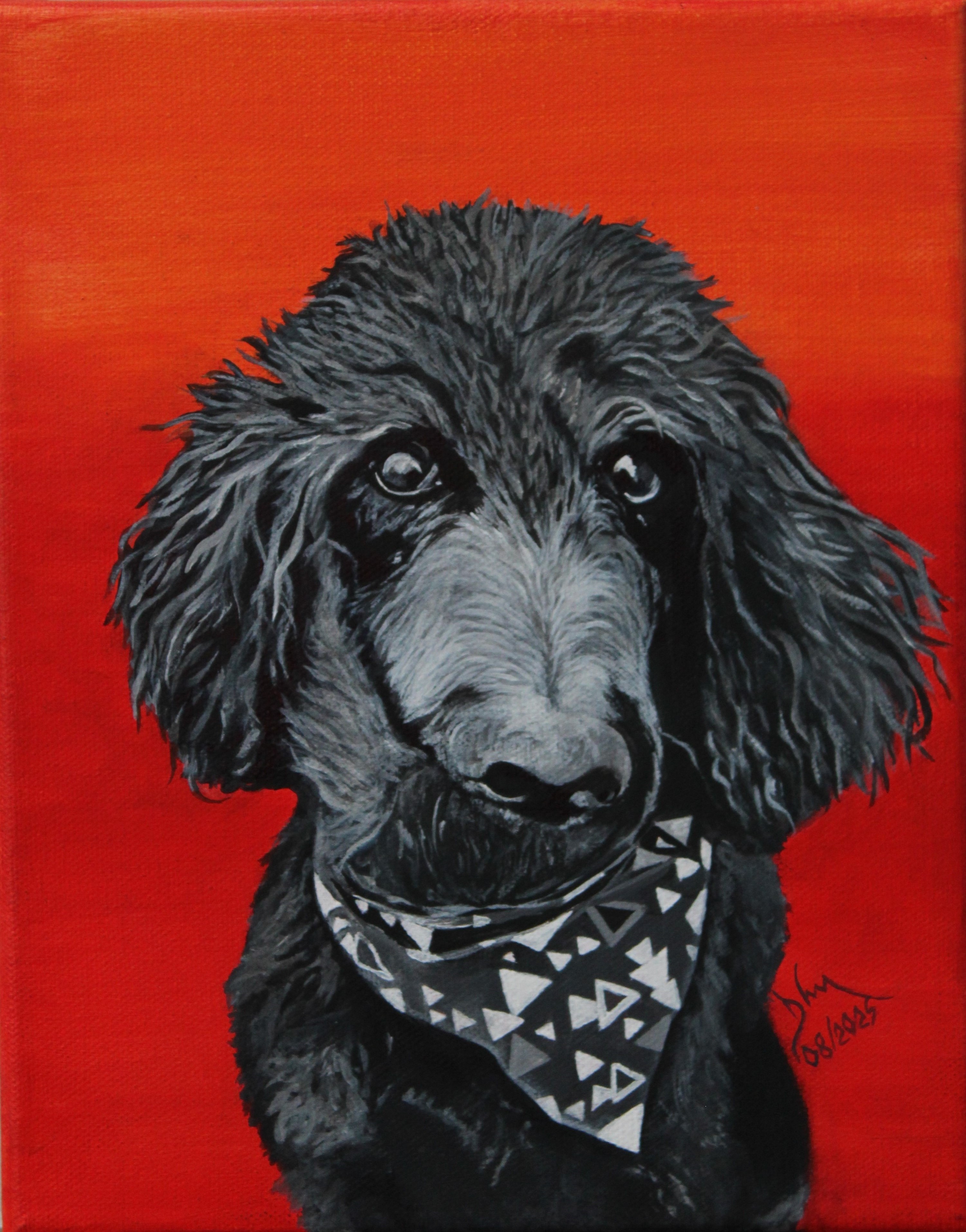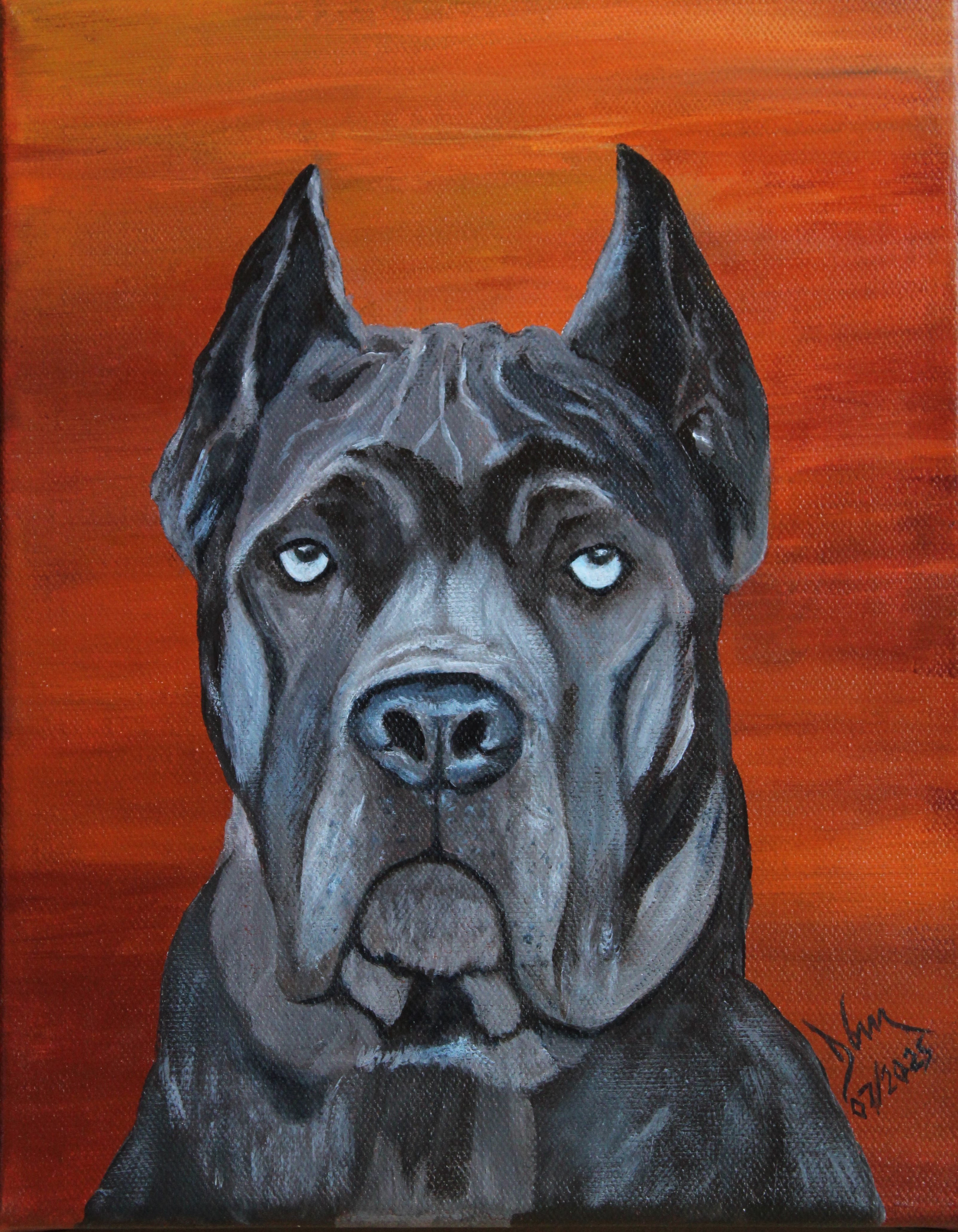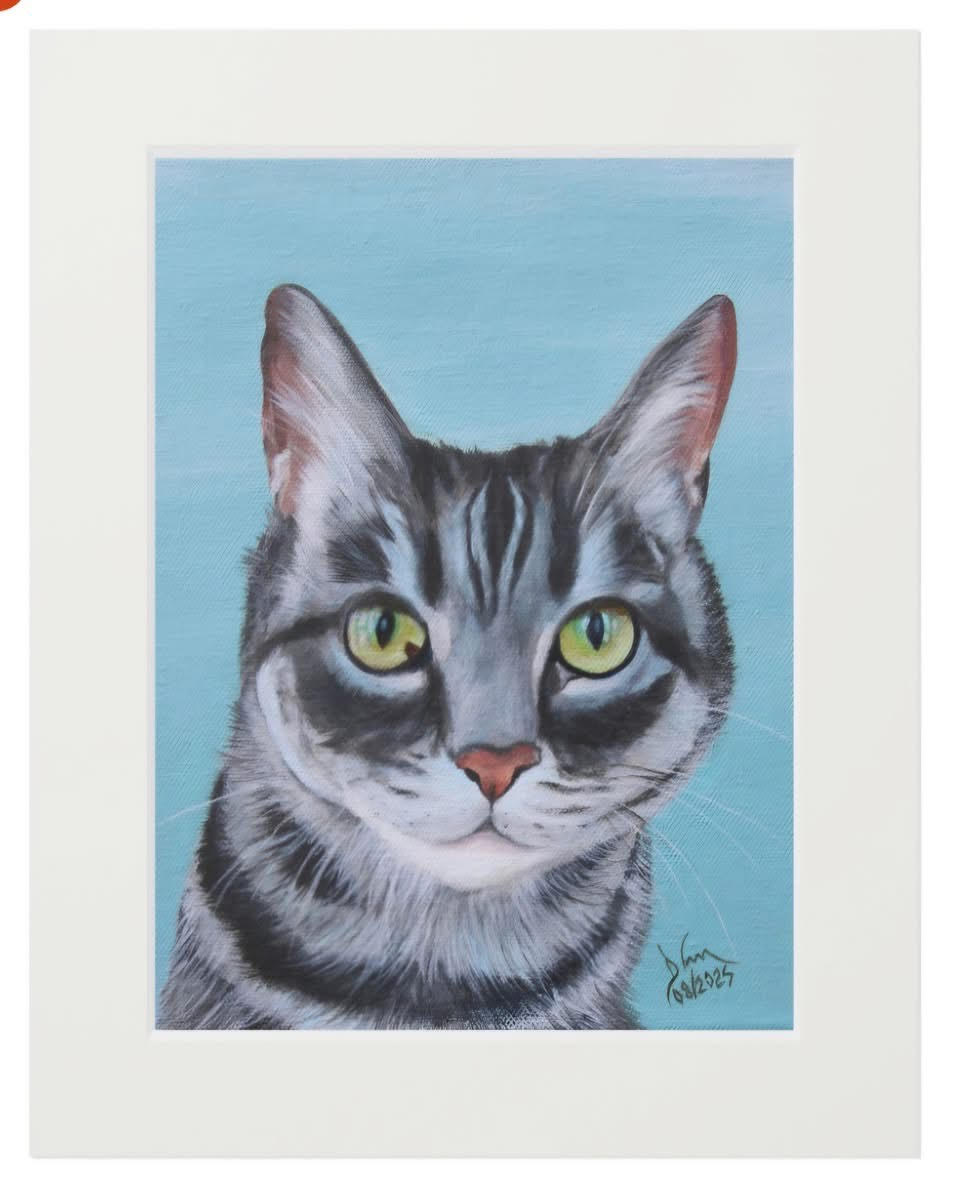French Bulldog Colors
Topic: dogs
Summary: This blog post titled “French Bulldog Colors: Guide to Standard & Rare Coat Types” explores the wide variety of French Bulldog coat colors—from AKC-recognized standards to rare and trendy hues. It includes detailed descriptions, health implications, pricing differences, and breeding considerations. Optimized to rank for “french bulldog colors” and related long-tail searches, it’s a perfect guide for potential owners and breed enthusiasts.
French Bulldog Colors: Guide to Standard & Rare Coat Types

Click Here to buy this print.

French Bulldogs are beloved not just for their compact size and goofy charm—but also for their wide variety of coat colors. From classic brindles to ultra-rare blues and lilacs, French Bulldog colors offer something for every dog lover.
In this post, we’ll explore every major Frenchie color, including:
- AKC-recognized standard colors
- Rare and exotic hues
- Color-related health concerns
- How color affects price
🎨 Standard French Bulldog Colors (AKC-Recognized)
The American Kennel Club (AKC) recognizes these colors as breed standards:
1. Brindle
- Most common color
- Black coat with lighter streaks or flecks
- Hardy, healthy, and classic
2. Fawn
- Light tan to reddish tan
- Often paired with a black mask
- Smooth and shiny coat
3. Pied
- Mostly white with patches of brindle or fawn
- Unpredictable markings; every pied Frenchie is unique
4. Cream
- Pale eggshell white color
- Often confused with white, but cream has a warm undertone
🌈 Rare & Exotic French Bulldog Colors
While beautiful, these colors are not AKC-approved for showing and may come with higher prices and potential health risks.
5. Blue (Gray)
- Steel-gray or slate-colored
- Caused by a recessive dilution gene
- May be linked to Color Dilution Alopecia (CDA)
6. Lilac
- A rare mix of blue and chocolate genes
- Light purple or grayish lavender tone
- Extremely expensive ($6,000+ in many cases)
7. Chocolate
- Rich, warm brown
- Can be solid or paired with tan points
8. Merle
- Mottled patches of color
- Often paired with blue eyes
- Linked to hearing and eye issues—ethical breeders avoid double-merles
9. Isabella
- Diluted version of lilac with a champagne hue
- Considered the rarest French Bulldog color in the world
10. Black
- Solid black Frenchies are rare
- Not a standard AKC-recognized color
🩺 Do French Bulldog Colors Affect Health?
Yes. Some rare colors—especially those from dilution genes (blue, lilac, merle)—can carry increased risk of:
- Skin issues (like Color Dilution Alopecia)
- Eye defects
- Deafness (in double-merle Frenchies)
- Higher susceptibility to sunburn (light colors)
✅ Tip: Always buy from health-focused breeders, not just color-focused ones.
💸 French Bulldog Price by Color
Here’s a rough guide to what you might pay based on coat color:
| Color | Estimated Price |
|---|---|
| Brindle | $2,000 – $3,500 |
| Fawn | $2,500 – $4,000 |
| Pied | $2,500 – $4,000 |
| Cream | $3,000 – $4,500 |
| Blue | $4,000 – $6,000 |
| Lilac | $5,000 – $8,000 |
| Merle | $6,000 – $10,000 |
| Isabella | $8,000 – $12,000+ |
💡 Note: Price also depends on breeder reputation, bloodline, and location.
🐶 Why the AKC Bans Certain Colors in French Bulldog Shows
Introduction
Dog show organizations like the AKC (American Kennel Club) and CKC (Canadian Kennel Club) enforce strict breed standards, which include acceptable coat colors. Many rare—or "fad"—colors are disqualified from conformation shows due to health concerns, breed purity, and ethical breeding practices.
👁️ Breed Standards: Accepted vs. Disqualified Colors
✅ AKC‑Recognized Colors
The AKC officially recognizes only these basic coat colors:
- Brindle
- Fawn
- Cream
- White
- Combinations like Brindle & White, Fawn & White, Fawn Brindle
- Patterns like Pied and minimal ticking
❌ Disqualifying (Rare) Colors
These rare or exotic colors are not allowed in AKC or CKC conformation rings:
- Solid black, black and tan, mouse/blue-gray, liver (chocolate)
- Blue, Lilac, Isabella, Merle (including Blue Merle & Lilac Merle)
- Chocolate & Tan, Black & White, Red, Tan variations
🌟 Rare Colors (With Images)
Blue Merle
- A marbled gray-blue base with dark patches, often featuring striking blue eyes.
- Why banned: Associated with merle gene risks (hearing & vision defects) and is outside the breed standard.
Isabella (Lilac/Lilac Merle)
- A pale lavender-gray coat resulting from diluted chocolate genes.
- Eyes may be light or blue.
- Why banned: It’s a dilute/chocolate variation not recognized in official standards.
Lilac Merle
- Rare combos like lilac merle or blue with tan-point markings.
- Why banned: Derived from multiple dilute or merle mutations and not part of AKC-sanctioned colors.
🧠 Why These Colors Are Banned
1. Maintaining Breed Integrity
AKC standards date back to early 1900s and only recognize historical color variants to preserve breed identity and lineage.
2. Health & Genetic Risks
Many rare colors involve recessive or merle genes that can lead to:
- Color Dilution Alopecia (e.g. in blue/lilac Frenchies)
- Hearing, vision, and structural issues (especially in merles or double-merle puppies)
3. Discouraging Trend-Based Breeding
By disqualifying fad colors, breed clubs aim to reduce unethical breeding motivated by profit, rather than health or conformation.
4. Indication of Crossbreeding
Some rare colors appear naturally only through crossbreeding with other breeds, meaning the dog may no longer meet strict definition of “purebred” under show rules.
✍️ Summary Q&A
| Question | Answer |
|---|---|
| Why are certain colors banned from AKC conformation shows? | Only colors defined in the breed standard (brindle, fawn, cream, white, pied) are permitted. Other colors are considered "non‑standard" or "fad" and disqualify the dog from showing. |
| What health concerns come with these rare colors? | Some carry genetic risks like dilution alopecia (blue/lilac) or sensory issues (merle). |
| Do these dogs lose AKC registration entirely? | No — they can still be AKC registered, but cannot be shown in conformation shows. |





